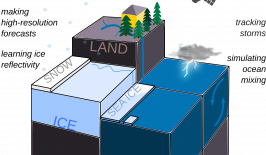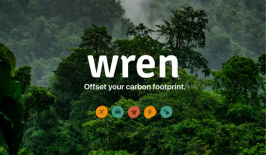En-ROADS provides exactly that – an accessible, interactive climate solutions simulation tool that anyone can use to explore possible different pathways to a low-carbon future.
In the Paris Agreement – adopted at the Paris climate conference in December 2015 – governments agreed to come together to avoid dangerous climate change, bylimiting global warming to well below 2°C. Five years on, the general consensus is that unless we begin to rapidly reduce greenhouse gasses right now, that target will soon slip out of reach. But the coronavirus crisis has shown us that we can take decisive action when there is a crisis to tackle. We can implement fundamental changes for the greater good – and policies that once seemed impossible now don’t seem quite so far out of reach.
Many large-scale solutions are already being deployed around the world – the share of renewable energies in the mix continues to grow, e-mobility is on the rise and tech is helping implement massive reforestation projects around the world.
Thanks to this we now have data to measure the impact of these kind of major climate interventions. But which of them are really the most effective? And which ones do we need to push for now, if we’re going to meet those crucial climate targets?
En-ROADS, which stands for “Energy Rapid Overview and Decision-Support Simulator” is a climate simulation tool that allows anyone to investigate the potential impact of these kind of different policies. Designed to be accessible to everyone, it can be experimented with by scientists, used in role-playing workshops for policy makers and negotiators, and also used as a learning tool for curious individuals, students and academics.
Made up of 38,000 equations and is based on 100 years of top quality energy, land and climate data, the simulator shows the quantitative impact of climate change solutions in different areas including energy supply, transport, buildings, economic growth and carbon removal. Moving the sliders up and down, the user can see how many degrees the global temperature rises when the share of renewable energy is increased, when carbon capture technologies are introduced, and when areas of land are planted with trees, for example. Beyond the 6 key change categories, users can also delve deeper into the simulator’s equations by challenging what are called the “assumptions.” Assumptions are the technical factors that lie behind the main solutions. These include variables such as climate sensitivity, the growth time of newly-planted trees, maximum electrification potentials and other limits, which are also subject to change depending on policy.
The tool shows us that with the business as usual scenario, we can expect a global temperature increase of +4.1°C by the year 2100. However, if one changes certain factors, like increasing the “carbon price” from the status quo to its maximum setting (a global carbon tax of 250 USD per ton of carbon dioxide), the temperature would “only” increase +2.9°C by 2100. Carbon pricing thus shows itself to be an effective tool in curbing global warming, but it is still not enough to curb global warming to the maximum 2ºC increase. With a combination of ambitious factors, though, the EN-Roads tool encouragingly shows us that reducing emissions to the non-catastrophic targets agreed upon in the Paris Agreement is still possible – at least in theory.
The En-ROADS tool was built by the a think tank called Climate Interactive with the help of the Massachusetts Institute of Technology (MIT) Sloan Sustainability Initiative, and Ventana Systems Inc. The aim of Climate Interactive’s work is to educate and encourage experimentation with different scenarios and pathways towards tackling the world’s biggest challenges. They do this with the help of a variety of free online tools, workshop guides, and games which they offer for free on their website, all backed up by scientifically-rigorous data and research.
Simulations are powerful tools for exploring possible paths to success when there’s a future goal set that simply must be reached. Simulations are used in medical surgery, machinery operation, and other high-risk occupations where failure is not an option. Climate change policy making has the same urgency – even if the immediacy of it is not always visible. If we are to avoid disastrous future climate scenarios, we need to simulate, plan for, and then take action to make these solutions a reality. As Ellie Johnston, the Climate and Energy Lead at Climate Interactive explains, the En-ROADS simulator turns a policy guessing game into real, proven opportunities for improvement: “People aren’t stuck speculating about what works and what doesn’t. They can run scenarios, create their own tests and see what makes a difference and what doesn’t.” The simulator gives cause for optimism: we have the ability to limit global warming and effectively combat climate change, but we need to take drastic steps soon if the low-carbon, sustainable simulation is ever to become reality.






